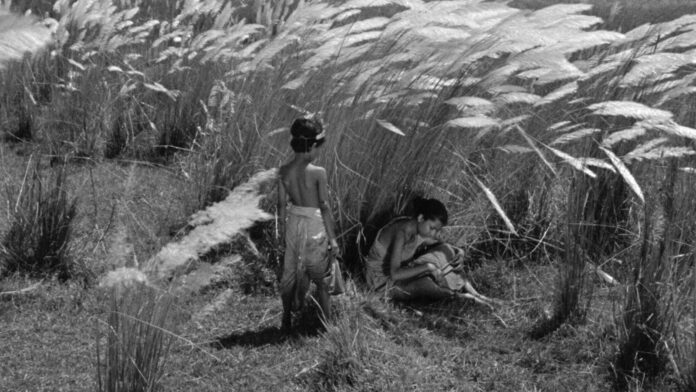| Subscribe to our YouTubeChannel |
|
|---|
In the 12 years it took photographer Chirodeep Chaudhuri to finish his book A Village In Bengal, about his ancestral hamlet Amadpur, Satyajit Ray was there to guide him when he realised the images he had taken were nothing more than pretty pictures. His friends compared his work to Pather Panchali, but Chaudhuri was dissatisfied. There was no story. Then, one afternoon in Kolkata, he came across a copy of the film on CD and watched it over and over for the next few months, slowly gaining insight.
“The truth of Ray’s observation, with regard to Pather Panchali, that ‘life in a poor Indian village does ramble,’ was something that I, too, was noticing,” Chaudhuri wrote in A Village In Bengal. “…my reading about Ray and repeated viewings of his films helped me to understand, albeit in a limited way, the Bengali way of life.” Chaudhuri, a Bengali living in Mumbai, is separated from Bengal on two levels: geographically and culturally, due to his inability to read Bangla. But you wouldn’t know it from looking at the work. A Village In Bengal is a startlingly intimate portrait of a village community, the images infused with the same quality of incandescence that critic Chidananda Dasgupta noted about the Apu trilogy, images lit by a beauty that appears detached from real life.
This umbilical cord has a strong grip on me. I visited the home of a reluctant interviewee in Purulia, West Bengal, about a half-decade ago, when I was younger and far less certain of myself. The subject dropped me on the eve of the trip, but she granted me permission to visit her family’s home. Who travels several hours from Kolkata to a person’s home who does not want to meet her? Why would the family bother talking to me? When we’re young, we’re prone to embarrassment.
The highway is like any other in the country, miles of grey road with swaying trucks and hoardings of “national” brands of cement and real estate on the sides. I felt a familiar pull as we approached the village and turned in from the highway. Slender white wispy flowers stood upright on the ground on both sides of the narrower road. The kaash flowers, so distinctive of Bengali landscapes—I had always lived in cities, but how many times must I have seen them on screen? How many filmmakers had used them to indicate that their story was set in Bengal?Durga and Apu, the adolescent sister and her young brother, are waiting among these slender white flowers when the train arrives, releasing clouds of black smoke into the countryside; a scene considered to be among the most iconic in world cinema.
This is a place I’m familiar with, I reasoned. I recognise this location, even if only from a screen. I’m familiar with its language, its many ponds, its hot sun, and its quickly falling evenings. My stomach clenched. This is something I’m capable of. And I made it.
It took five years to make Pather Panchali, which was released in 1955. A debutant film-maker who grew up in colonial India started making a Bengali film about a village three years after the country gained independence from 200 years of British rule. François Truffaut is said to have said, “I don’t want to see a movie about peasants eating with their hands,” as he walked out of a movie screening. Ray, on the other hand, appeared unconcerned by such reactions. This is what strikes me the most: how confident Ray was as a young artist.
Ray has left us a map of our place in the world, an atlas of Bengaliness’ habits, rhythms, anxieties, and aspirations, which I write as a Bengali. In his book The Cinema Of Satyajit Ray, critic Chidananda Dasgupta wrote, “The modern educated Indian needs to find the umbilical cord linking him to his own tradition and the common man in order to save himself from being a refugee.”
Ray’s films are known for their humanity. He was not a Marxist like his contemporaries Mrinal Sen and Ritwik Ghatak. He believed that the individual’s potential is unrivalled and that no state or system could supplant it. Nonetheless, the specificity of his location did not detract from his humanity. In a documentary about Apur Sansar, actor Sharmila Tagore, who appeared in five Ray films, said, “He built this bridge between his beloved Bengal and the rest of the world.”
The ability to locate the entire world in a single grain of sand is said to be the mark of great art. However, the world is mostly held up to us in the form of English and American grains, with a few French and Italian grains thrown in for good measure. Ray found the entire world in a single grain of Bengal rice. He instilled in us the understanding that our lives, feelings, and adventures matter. That we don’t have to judge ourselves solely on the basis of Anglophone and Eurocentric experiences. That we have our own stories, histories, and geographies. And they’re important. We are important.


















